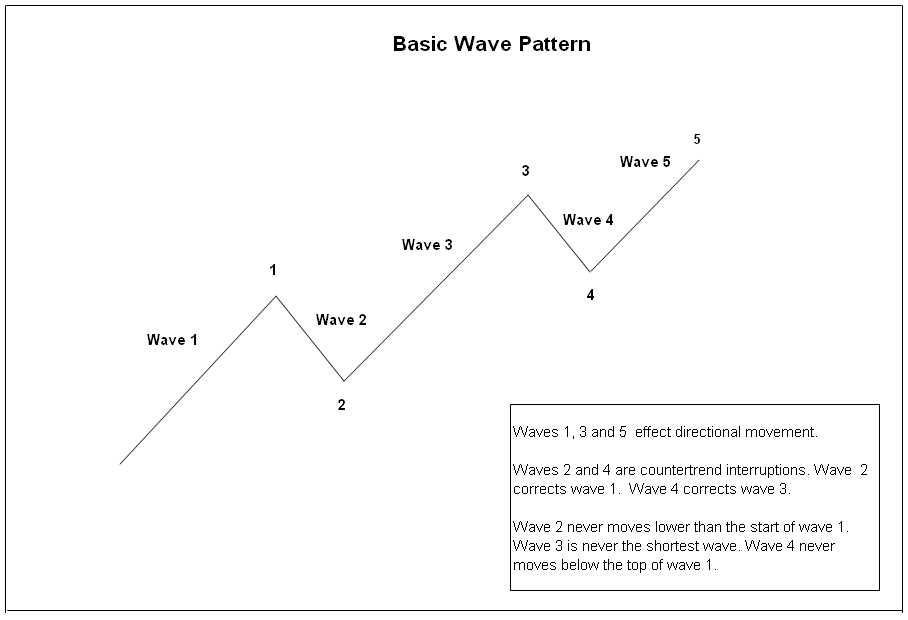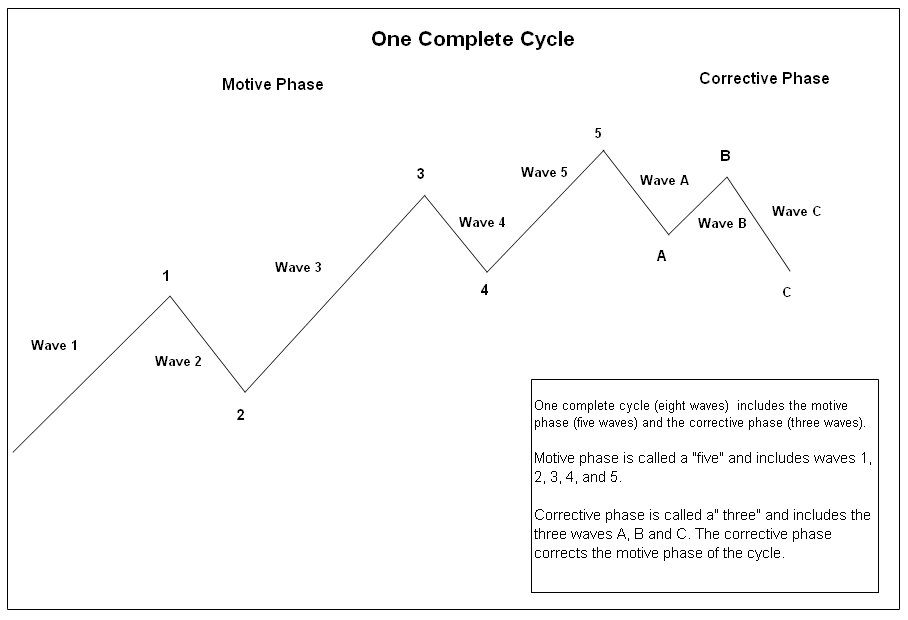Brief Introduction to Elliott Waves
According to R. N. Elliott, the founder of the Elliott Wave Principle, markets move in waves, which are patterns of directional movements of prices.
The fundamental building block of the Elliott Wave Principle is the basic
wave that consists of five waves. Waves 1, 3 and 5 set the direction of
the move and waves 2 and 4 temporarily correct the directional move. You
will find the five-way pattern in all types of price charts from one-minute,
daily, monthly, annual and beyond.

One complete cycle of prices consists of a five-wave motive phase (called
a "five") and a three-wave corrective phase called a "three".
The corrective phase corrects the motive phase of the cycle.
In terms used on buyupside.com the five-wave motive phase in
this example is a price upside and the three-wave corrective phase in
a price downside. Not all motive phases are in an upside direction. You
could have a five-wave motive phase headed down with a three-wave corrective
phase temporarily pushing prices up.

According to the Elliott Wave Principle the basic eight-wave patterns
occurs at all scales from minute-to-minute price patterns, hourly, daily,
monthly, annual and beyond.
Related Articles
Analyzing Price Upsides and Downsides
Cyclical Price Pattern - An Opportunity to Make Money
Introduction to Stock Price Patterns
Price Downsides Produce Losers
Stock Mareket Follows Multiyear Price Cycles (January 1871 - Presnt)
